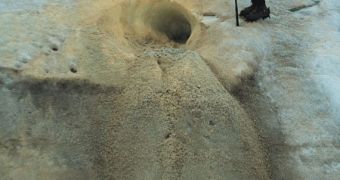Jupiter's moon Europa is very interesting to astronomers, as it may very well hold a liquid ocean of water just below its surface. However, getting there is a challenge, and researchers are currently working on a way of making it possible.
This is the goal of a new research initiative, which seeks to determine the location of places resembling Europa either on Earth, or a lot closer to home than the Jovian moon is.
Sending a space exploration mission directly to the moon would most likely be suicide, experts believe, given how little we know of the celestial body.
But additional data could make such a flight a lot safer and also more appealing to space agencies. First of all, however, a basic amount of data on Europa needs to be extract in whichever way possible.
The goal of the new research efforts is to subject a potential spacecraft that might land on the moon to all of the rigors it would encounter at its landing site.
First of all, Europa is a very cold place to be, featuring a mean temperature of only 102 degrees Kelvin, or -171 degrees Celsius. Temperatures can however drop to as low as -223 degrees Celsius.
Secondly, it's covered with an impossibly-thick layer of ice, which acts like a planetary crust of sorts.
This means that the ocean which may exist underground – similar to the case of the Saturnine moon Enceladus – is very well protected, and also difficult to reach.
In addition to these engineering difficulties, astrobiologists are also very worried about the potential for cross-contamination, between the moon and spacecraft we send to land on it.
Bacteria and other microorganisms on Earth have been shown to be capable of withstanding the harshness of space, so they could theoretically endure a trip to Europa.
Once on the moon, the organisms could spread and multiply, therefore skewing the results of any analyses instruments aboard a future Europa-bound spacecraft may conduct.
“Before we can build landers, we need to understand these environments, and the interplay of biology and chemistry under these unusual conditions,” explains Damhnait Gleeson.
“Designing missions to go to Europa presents many technical challenges, from the low temperatures to the harsh radiation,” says Gleeson, who is an astrobiologist at the NASA Jet Propulsion Laboratory (JPL), in Pasadena, California.
“The more different sets of conditions we prepare for, the better our chances of being prepared for the unexpected at Europa,” the scientist concludes, quoted by Space.

 14 DAY TRIAL //
14 DAY TRIAL //